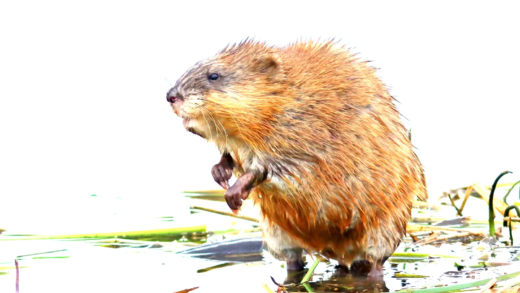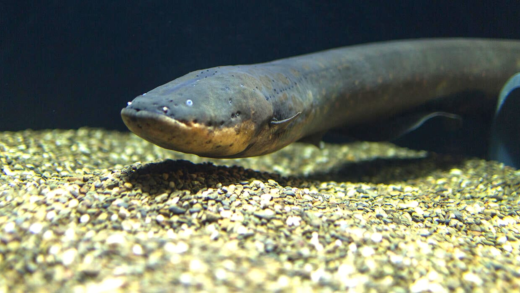Octopuses are masters of camouflage, using specialized cells called chromatophores to blend into their surroundings and evade predators. Various species, including the Common Octopus and Blue-ringed Octopus, exhibit exceptional camouflage abilities. These adaptations enhance their hunting strategies, allowing them to ambush prey effectively. Real-life examples showcase their remarkable ability to mimic their environment, highlighting the importance of camouflage in their survival.
What is Octopus Camouflage?
Octopus camouflage is a fascinating survival technique that allows these incredible creatures to blend seamlessly into their surroundings. This ability to change color and texture is crucial for their survival, enabling them to evade predators and ambush prey. The basic concept of camouflage in octopuses revolves around their capacity to mimic the colors, patterns, and even textures of their environment. This makes them nearly invisible to both predators and unsuspecting prey.
How Do Octopuses Change Color?
Octopuses possess specialized cells in their skin called chromatophores, which play a vital role in their ability to change color. These cells contain pigments and can expand or contract, allowing the octopus to alter its appearance rapidly. When an octopus wants to change color, its nervous system sends signals to the chromatophores, leading to a stunning transformation. This mechanism is not just about color; it also involves the manipulation of skin texture, making the octopus appear smooth or rough, depending on what it needs to mimic.
The Importance of Camouflage
Camouflage is essential for the survival of octopuses, as it provides significant advantages in the wild. By blending into their surroundings, octopuses can avoid detection by predators, such as sharks and larger fish. Additionally, this skill helps them to ambush prey, increasing their hunting success. The ability to camouflage effectively allows octopuses to navigate their environments with greater ease and security, highlighting the evolutionary importance of this remarkable adaptation.
Octopus Predators
Octopus predators pose significant threats to these remarkable creatures. The key predators of octopuses include:
- Sharks: These formidable hunters are well-known for their speed and strength, making them a top threat.
- Larger Fish: Species such as groupers and barracudas often prey on smaller octopuses.
- Sea Birds: Birds like seagulls and pelicans can snatch octopuses from the water’s surface.
- Other Cephalopods: Larger octopus species may even consume smaller ones, making them their own predators.
Understanding these threats highlights the importance of octopus camouflage. By blending into their environment, octopuses can effectively evade these predators, thus enhancing their chances of survival.
Octopus Mimicry
Octopus mimicry showcases the incredible adaptability of these creatures. Some octopuses can imitate the appearance and behavior of other marine animals, which serves multiple purposes:
- Deception: By mimicking the colors and patterns of toxic species like lionfish, octopuses can deter potential predators.
- Ambush Hunting: Mimicking the appearance of prey can lure unsuspecting fish close enough for a successful catch.
- Environmental Adaptation: Some octopuses can mimic the texture and shape of rocks or coral, making them nearly invisible in their habitat.
This mimicry is a fascinating example of how octopuses have evolved to survive in diverse environments, showcasing their intelligence and versatility.
Chromatophores in Octopus
Chromatophores in octopus skin are essential for their camouflage abilities. These specialized pigment cells contain various colors and can expand or contract:
- Color Change: When an octopus wishes to change color, its nervous system triggers the chromatophores to expand or contract, altering its appearance.
- Texture Manipulation: Beyond color, these cells allow octopuses to change skin texture, making them appear smooth or rough, depending on their surroundings.
- Rapid Response: This mechanism enables octopuses to react quickly to threats or changes in their environment, enhancing their survival chances.
Understanding chromatophores is crucial for appreciating how octopuses achieve their remarkable camouflage, allowing them to blend seamlessly into their habitats.
Species of Octopus That Can Camouflage
Octopus camouflage is not just a skill but a survival necessity, and several species excel at this incredible feat. Here are a few notable octopus species known for their camouflage abilities:
- Common Octopus (Octopus vulgaris): This species is renowned for its ability to blend into various environments, using both color and texture changes.
- Blue-ringed Octopus (Hapalochlaena spp.): While it often displays bright colors, it can also camouflage itself against predators when threatened.
- Octopus mimicus: Known for its exceptional mimicry, this octopus can imitate the appearance and movements of other marine animals, enhancing its camouflage.
- Veined Octopus (Octopus marginatus): This species uses its ability to change skin texture and color to hide among rocks and corals.
- Giant Pacific Octopus (Enteroctopus dofleini): This large species can change color and texture, allowing it to blend into various substrates in its habitat.
These species showcase the diversity of octopus camouflage, making them adept at evading predators and hunting effectively.
Hunting Strategies of Octopus
Octopuses utilize their camouflage not only for protection but also as a crucial component of their hunting strategies. By blending into their surroundings, octopuses can ambush unsuspecting prey effectively. Here’s how camouflage enhances their hunting:
- Stealthy Approach: Camouflage allows octopuses to get close to their prey without being detected. They can lie in wait, perfectly blending with the environment, until the right moment to strike.
- Surprise Attacks: Many octopuses employ a technique called “sit-and-wait” predation. By remaining still and camouflaged, they can launch a rapid attack on fish or crustaceans that venture too close.
- Environmental Manipulation: Some octopuses use their camouflage to mimic the appearance of prey species, luring other fish into their reach. This clever tactic increases their chances of a successful catch.
Through these strategies, octopuses demonstrate not only their remarkable camouflage abilities but also their intelligence and adaptability in the wild.
Fascinating Examples of Octopus Camouflage
Real-life instances of octopus camouflage are nothing short of astonishing. Here are some captivating examples:
- Octopus vulgaris: Observed changing its color to match the sandy ocean floor, making it almost invisible to both predators and prey.
- Octopus mimicus: This species has been seen mimicking the shape and movements of lionfish and flatfish, showcasing its extraordinary mimicry abilities.
- Veined Octopus: Known to hide among rocks, it can alter its texture to resemble the surrounding environment, effectively hiding from predators.
- Blue-ringed Octopus: Despite its bright coloration, it can remain hidden against coral or rocky substrates, using its color-changing abilities to blend in.
These examples highlight the incredible skill of octopuses in utilizing camouflage, not just for survival but also as a strategic advantage in hunting and evading threats.





Comments are closed.